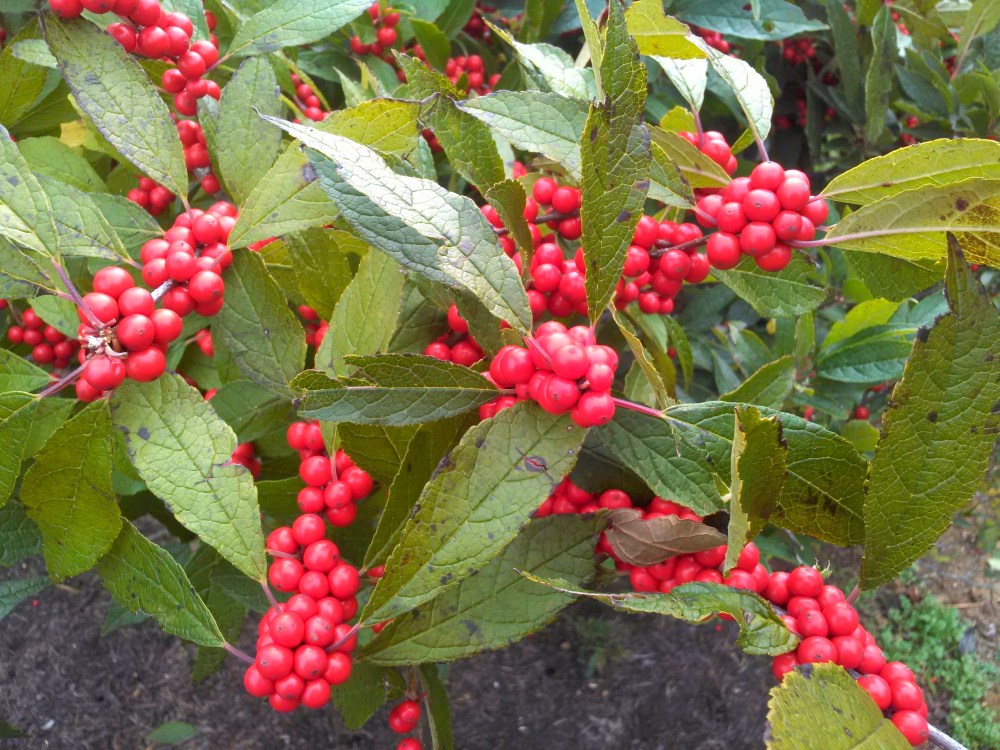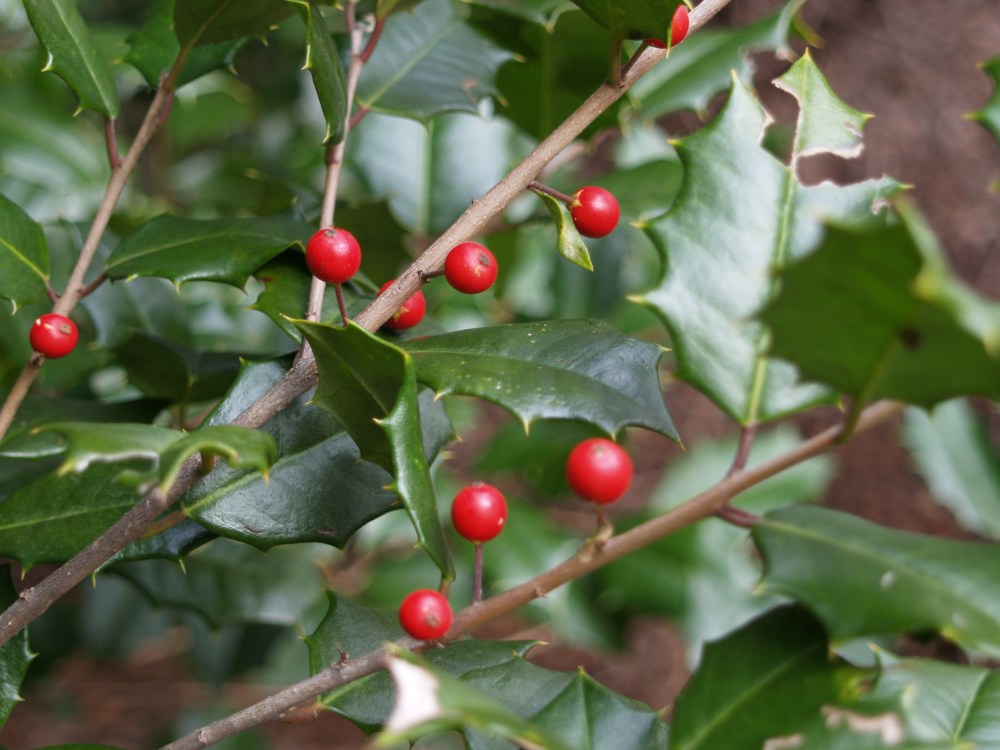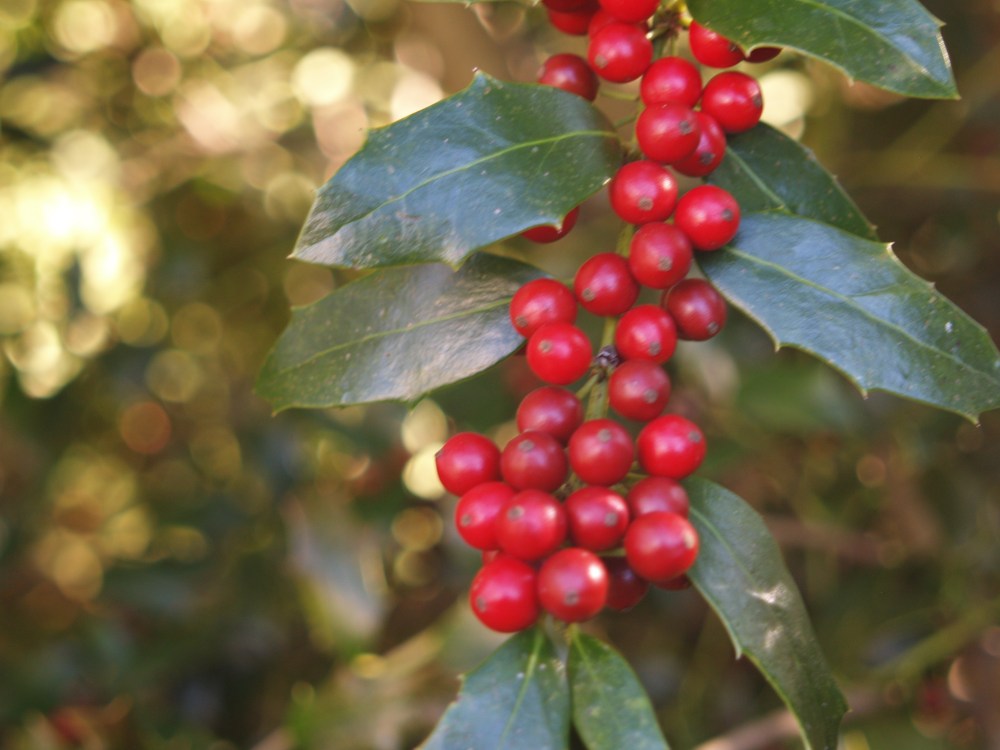The garden’s Sparkleberry hollies (Ilex verticillata ‘Sparkleberry’) need a friend. Or, at least a nearby pollinator so that pollen is passed between male and females so there will be more berries. I think that at one point I planted a male holly in the vicinity, but that was long ago, and the details are fuzzy, so I’m not so certain. In any case, a male no longer exists, and apparently there are none nearby.

Today, there are three lanky hollies, but this was initially a planting of five, I think. One, I suppose, would have been the male pollinator, but until a few years ago all were threatened by an aggressive clump of bamboo. When the bamboo was finally cut out, two hollies that had been most overwhelmed had died, and were chopped out along with the annoying bamboo. One of the two hollies cut out was the male, I figure, and now in early November there are only scattered berries on the three hollies still here.
I recall years in the past when berries were more abundant, and below is visual evidence to prove this is not only my wishful thinking (as is true too frequently). In any case, the hollies are not remarkable at all without berries, so planting one male in close proximity is likely to result in a considerable improvement.

Evergreen hollies (‘Christmas Jewel’ holly, at bottom of page) in the garden appear to have no pollination troubles, with plentiful berries, though berries on the handful of native American hollies (Ilex opaca) are always sparse. Many of the seedling native hollies are small, so lacking berries is excusable, but even hollies ten feet tall have few (below), for whatever reason.
As with most hollies, the Sparkleberries require a specific pollinator with a male flowering at the same time as the female. I’m supposing that at one time in the recent past there was one in my garden, or at least in the neighborhood, but today the process doesn’t work so well, not just this year but in the past several years. Perhaps you’ve heard me say that I’ve given up trying to reason along with nature, so I’ve determined not to try to figure this one out, but just to plant another male and expect that this will take care of it. We’ll see next year.

Beautiful. If only the gathering “Gangs” of Robins didn’t eat all of mine in a day or two! It is more like a Robin tree than a holly tree!
Birds make quick work of the dogwood berries in my garden once they are ripe, but they are much slower to consume holly and nandina berries. I think that the berries of Sparkleberry are more palatable than from other hollies which will often go late into the winter without being eaten. Nandina berries are rarely eaten.
I love hollies! When we visited Kew in September there were rows and rows of so many varieties it was mindboggling! I would LOVE to revist during berry time!